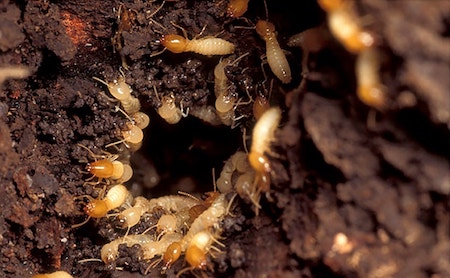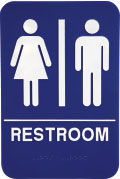Formosans' Favorites
The following locales can be especially conducive to termite breeding. Here’s what to look for.

The Formosan subterranean termite currently infests only 11 states, including most of the Gulf and southern Atlantic coastal states, California and Hawaii — but what an awesome pest it is.
A major Formosan colony can contain millions of workers, produce 70,000 swarmers, feed on wood within 300 feet of the nest and infest several buildings at once. And because they produce “carton,” a moisture-retaining mix of saliva, feces and chewed wood, Formosans can establish aerial nests in high-rise buildings.
Here are some factors that can contribute to a Formosan termite attack:
Stucco.
Composed of cement, sand and lime, stucco holds moisture. Wet stucco is a prime contributor to Formosan infestations. It should never extend below grade. Look out also for downspouts or air conditioning drains that leak water onto stucco. Check for automatic sprinkler systems that may be wetting the stucco when turned on in the evening.

Commode and Shower Stalls.
Many Formosan infestations originate in bathrooms where leaks and condensation provide moisture. Be sure to be on the lookout in these spots.
Pipe Sleeves.
Copper water pipes installed through a concrete slab may be covered by soft plastic sleeves. Unfortunately, these sleeves sometimes provide protected entryways for termites.
Utility Poles & Stumps. A typical Formosan termite nest will be in the soil at the base of a utility pole, fence post or tree stump, and the workers will be foraging to nearby buildings.
Flat Roofs.
In Florida, 25 percent of infestations are started above ground by swarming reproductives. A colony often begins when Formosan reproductives swarm in early evening after a rain and fly up and under the metal roof flashing on high-rise buildings. Standing water on flat roofs and leaks around vents often provide the moisture for colony development.
In homes, aerial colonies are often centered under leaky chimney flashings or around leaky eaves.
The authors are co-owners of Pinto & Associates, Mechanicsville, Md.
Recent Articles
TERMITE DAMAGE TO YOUR JUPITER, FL, HOME: WHAT TO LOOK FOR
Many Jupiter, FL, homeowners ask themselves what termite damage actually looks like. You should know the damage that is and can be caused by termite infestation in your building, and [...]
HOW TO KNOW IF YOU HAVE TERMITES
The signs of a termite infestation are often subtle and hard to spot, but the damage they cause costs Americans billions of dollars every year. Termites eat not only the wood of your home but also [...]

